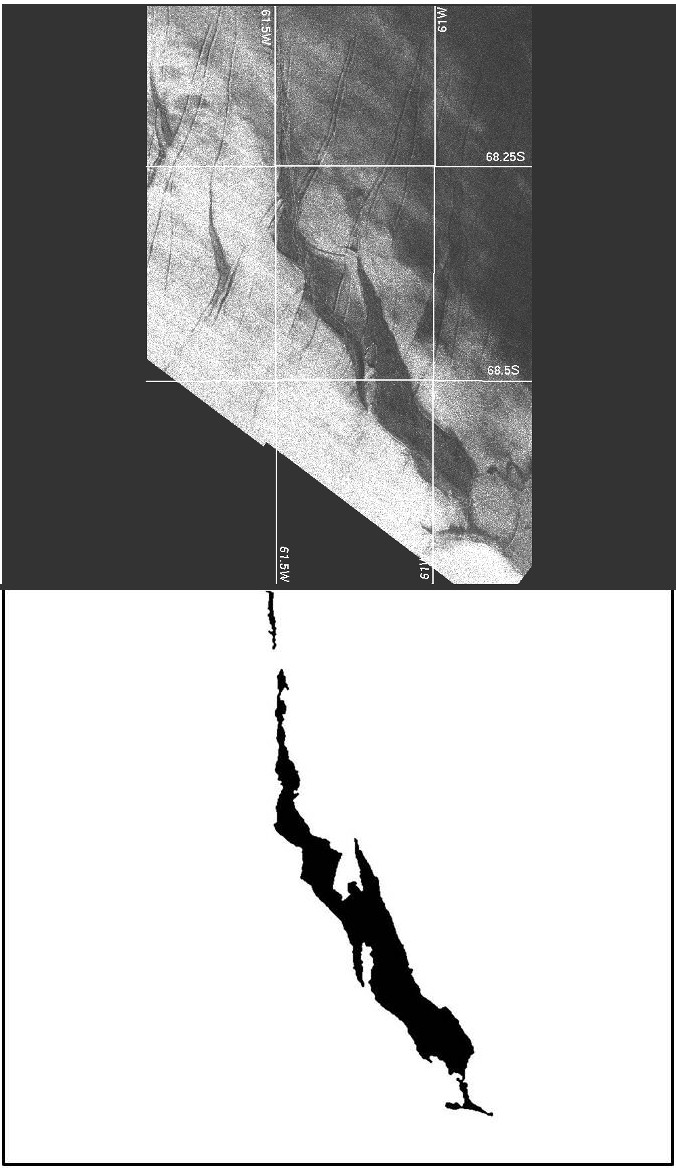Monitoring Larsen platform, Antarctica

An ice block, one of the largest on record, with a size near that of the Italian region Liguria, is ready to detach from the Antarctic Penninsula. The fracture rapidly grew last December and now only an ice strip, 20 km long, keeps attached this giant: a block of some 5,000 square km [1].
On November 10, 2016, during the IceBridge campaign, NASA scientists took a picture of the fracture in the Larsen C [2] shelf, showing its impressive size: 110 km long, 91 m width and 500 m depth. In December 2016, the fracture had extended of further 21 km, hence only 20 km remain before the final collapse which is given for sure in 2017[3] , with the loss of an area of some 6,000 km2, corresponding to about 9-12% of the entire shelf [4].
Flavio Parmiggiani, of ISAC-CNR, is monitoring the ice shelf by means of the COSMO-SkyMed Constellation satellite data. Flavio is the responsible of the project “SAR ANALYSIS OF SEA-ICE FORMATION IN THE ARCTIC AND IN ANTARCTICA”, a project activated in the frame of the ASI “Open Call COSMO-SkyMed” Program, started by ASI in February 2015. This Program is allowing to the national and international scientific community to obtain free COSMO-SkyMed data.
The larsen C fracture is clearly visible in the attached COSMO-SkyMed image of 20/1/2017: just south of 68.5S, its width has reached 4.5 km.
[1] La Repubblica-Ambiente, 6 January 2017.
[2] Sarah Loff, Rift in Antarctica's Larsen C Ice Shelf, NASA, 13 December2016.
[3] Matt McGrath, Huge Antarctic iceberg poised to break away, BBC, 5 January 2017.
[4] Growing Crack in Antarctica's Larsen C Ice Shelf Spotted by NASA's MISR, NASA.

